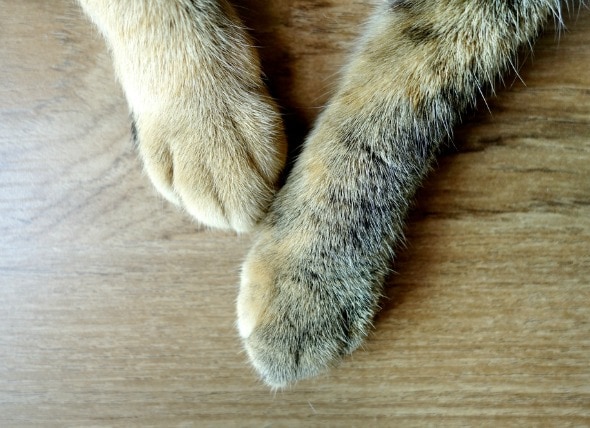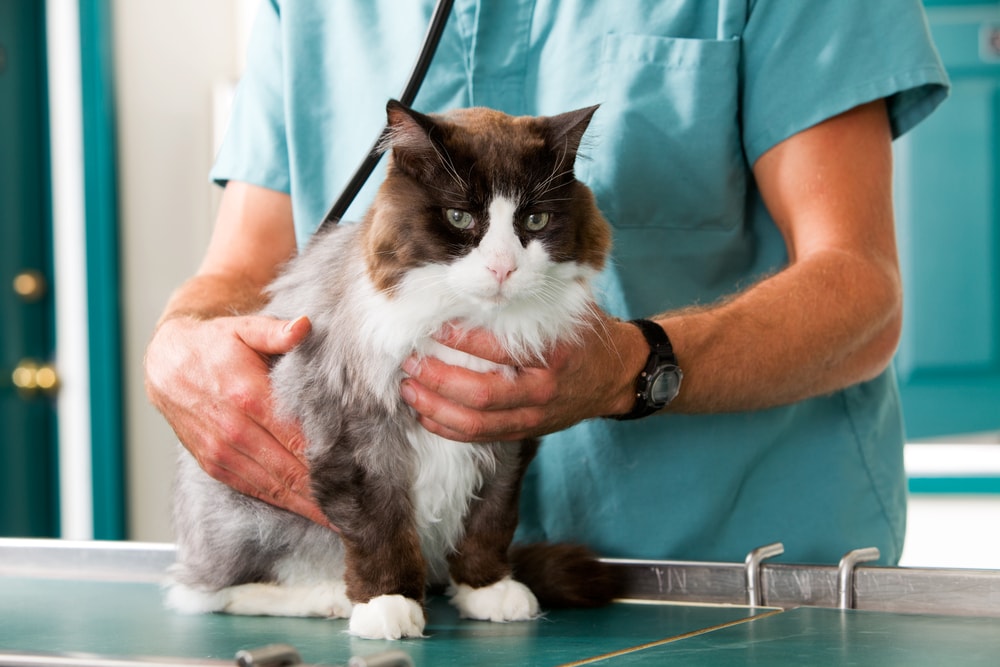sarcoma in cats paw
The tumor types behave similarly and are therefore treated the same way. Sarcoma in cats paw Thursday January 6 2022 Edit Osteosarcoma is extremely aggressive and it spreads quickly to other parts of the.

Signs Of Cancer In Cats How To Tell If Your Cat Has Cancer Daily Paws
Approximately 90 of nasal tumors are malignant meaning that they can spread.

. Secondly a feline sarcoma can also arise from a virus. 4 Types of Cat Cancer and Their Common Symptoms. Nerve sheath tumor previously called neurofibrosarcoma schwannoma hemangiopericytoma Rhabdomyosarcoma.
Therefore these tumors can develop over the chest. Connective muscle and nervous tissues are present throughout the entire body. Metastatic tumors that affect the skin are associated with poor prospects for recovery.
Fibrosarcoma Soft Tissue Sarcoma. Other tumor types have been described osteosarcoma chondrosarcoma malignant fibrous histiocytoma. Very few tumors and cancers have a single known cause.
Sadly one in five cats get cancer. If a metastatic tumor is found on one or more paws of a cat veterinarians will usually check for the presence of lung cancer. It is a mesenchymal tumor in which the fibroblasts of the connective tissue proliferate.
No known cause has been identified. These cancers form from the fibroblasts cells that produce fibrous tissue and other supporting tissues most commonly arising beneath the skin. Vaccine-associated sarcoma in cat associated with the injection site accounts for between 6 and 12 of feline tumors.
Osteosarcoma is very painful. The term soft-tissue sarcoma encompasses a broad category of tumors that show up in a cats connective muscle or nervous tissues. Malignant lung tumors are prone to spread to the paws or legs.
There are two major root causes. Nasal tumors are relatively uncommon in cats accounting for 1-5 of all feline cancers. The most common injection-site sarcoma in cats is a fibrosarcoma.
It is a very aggressive neoplasm with a great tendency to local recurrence. A local vaccine-associated sarcoma is one that grows at the place where the feline receives a vaccination. If a metastatic tumor is found on one or more paws of a cat veterinarians will usually check for the presence of lung cancer.
The following are just four types of sarcomas in cats. A tumor that develops at the site of a vaccine injection such as for rabies or. The invasiveness of this type of sarcoma makes amputation if possible of the affected limb the treatment of.
Its important to know that the risk of not vaccinating your cat far outweighs the possibility of her developing a vaccine-associated sarcoma. Squamous cell carcinoma is rarely found on the feet of cats unless it has metastasized from other body parts. A diagnosis of a high-grade soft tissue sarcoma with an increased risk of metastasis was made based on a histopathology report.
An injection-site sarcoma is a tumor of the connective tissues in the cat. This is a cancerous growth presenting as a mass on the body or leg of a cat. Fibrosarcomas are a type of soft tissue sarcoma STS and in general this term acts as an umbrella for a variety of tumors including fibrosarcoma-connective tissue chondrosarcoma-cartilage liposarcoma-fat tissue hemangiosarcoma-blood vessel cells nerve sheath tumor hemangiopericytoma-cells supporting blood vessels.
Ad Help your pet cope with symptoms like nausea loss of appetite and energy. Synovial Sarcoma in Cats Symptoms and Types. Fibrosarcoma is a form of soft-tissue cancer that is not uncommon common in cats.
Figure 1If FISS is even remotely possible indications for biopsy are. Your cat may be. Soft tissue sarcomas are a broad category of tumors including those that arise from the connective muscle or nervous tissues in dogs or cats.
Causes of Foot or Toe Cancer in Cats. Firstly it is a vaccine-associated sarcoma meaning it can appear after a vaccine. If your cat has an osteosarcoma of the limb appendicular osteosarcoma lameness or a distinct swelling may be noted.
Synovial Sarcoma in Cats. It is a very aggressive neoplasm with a great tendency to local recurrence. Lymphoma squamous cell carcinoma mast cell tumour and bone cancer are all common in cats.
Points to note include the cats vaccination history the location of the mass when it was first noticed any change in size and the current size of the mass measured with calipers. Melanocytic tumors are most common in cats between eight and 14 years of age. A few weeks later the cat was returned to the clinic with further swelling of the left foreleg.
These tumors are the result of abnormal production of these cell types in an uncontrolled manner. It can affect cats of any breed or age. When describing feline fibrosarcoma vets explain that this type of cancer begins in individual cells within connective tissue as well as just under the surface of the cats skin.
The Vaccine-Associated Feline Sarcoma Task Force is an alliance of veterinary organizations dedicated to studying and remedying this problem. The degree of malignancy of these tumours varies some are highly. Regardless of underlying tissue type all injection site sarcomas behave as locally aggressive tumors with a modest chance of spread to distant sites in the body.
The cat was euthanized following the diagnosis as the cat had a fair to poor prognosis. Unlike other cancers however nasal tumors do not tend to metastasize to distant sites. What You Can Do.
The most common cell type affected is the fibroblast giving the tumor the name fibrosarcoma. Most seem to be caused by a complex mix of risk factors some environmental and some genetic or hereditary. They commonly present as gradually enlarging firm masses under the skin.
Feline injection-site sarcoma arises from connective tissues. This is one reason you want to ensure your cat has regular wellness. Vaccine-associated sarcoma in cat Symptoms And Treatment.
Fibrosarcoma generally grows aggressively in the cells where it first appears but is slow to spread to other body. However these tumors can cause significant disease. The most common cell type affected is the fibroblast giving the tumor the name fibrosarcoma.
You will need to provide a thorough history of your cats health and onset of symptoms. Get NHVs most useful pet cancer supplements in one holistic pack. Diagnosis and staging.
When a cat is presented for a subcutaneous mass it is important to consider the history. What are the signs of osteosarcoma. While a cancer diagnosis is emotionally devastating some cancers are treatable if caught early.
Injection site sarcomas arise at sites where the cat.

Foot Or Toe Cancer In Cats Symptoms Causes Diagnosis Treatment Recovery Management Cost

Feline Plasma Cell Pododermatitis My Cat Has A Sore Paw

14 Year Old Neutered Mexican Male Cat A B Head In An Equilateral Download Scientific Diagram

My Cat S Paw Is Swollen Causes And Treatment Of Swollen Cat Paws

My Cat S Paw Is Swollen Causes And Treatment Of Swollen Cat Paws

Zzzzz Tito Pierre Cat Cat Magazine Cats Animals

My Cats Paws Are Dry Sale Online 50 Off Www Pegasusaerogroup Com

Senior Cat With Front Paw Swelling And Pain Today S Veterinary Practice

Feral Cat With Large Tumor On Jaw Makes Herself At Home On Family S Porch Baby Cats Animal Rescue Animal Rescue Site

Senior Cat With Front Paw Swelling And Pain Today S Veterinary Practice

Emergency Kittens On Twitter Cats Cute Cat Gif Cute Cats

Canine Soft Tissue Sarcomas Vetgirl Veterinary Ce Blogs Veterinary Canine Vet Tech





